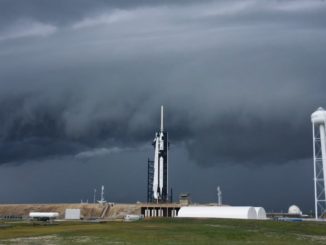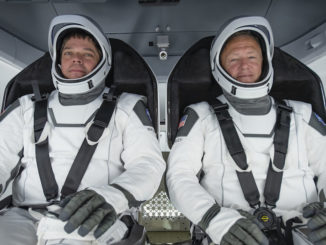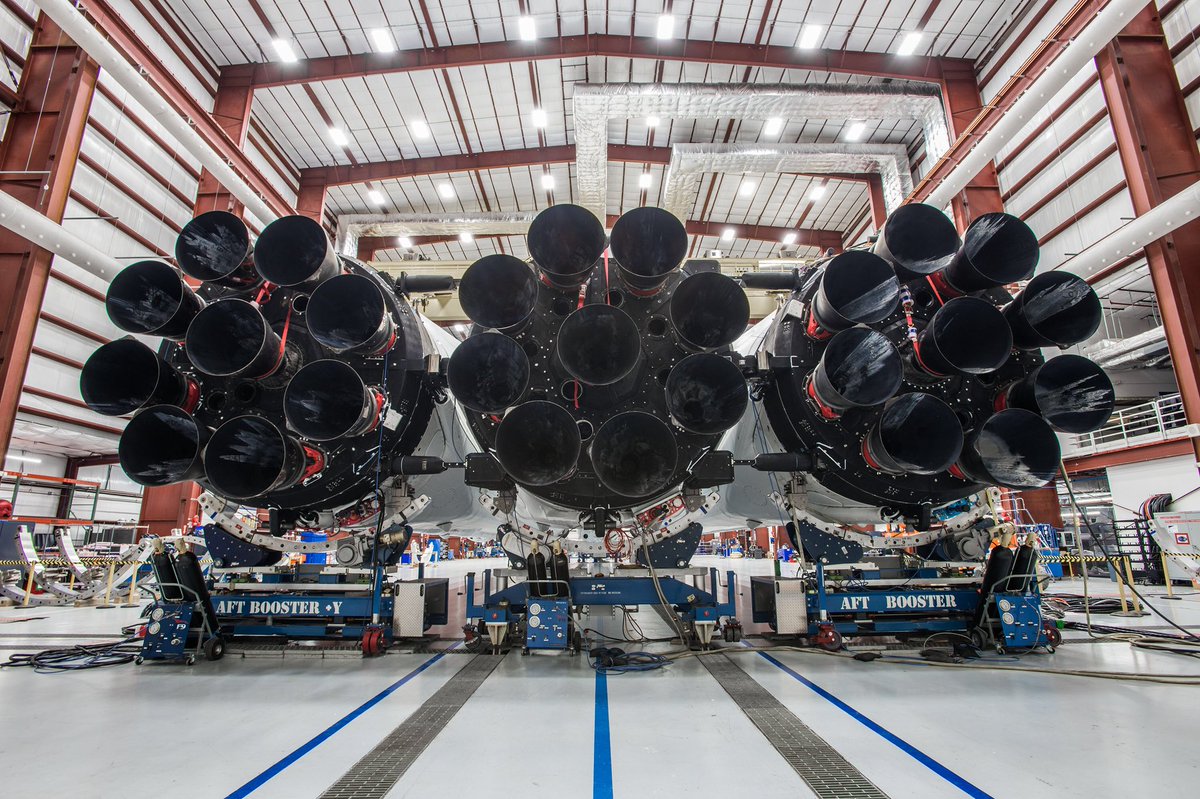
SpaceX chief executive Elon Musk released the first images of his company’s Falcon Heavy rocket Wednesday, showing the massive triple-core booster almost fully assembled inside its hangar at the Kennedy Space Center’s pad 39A, where it is scheduled to lift off some time in January.
The three images posted on Twitter show the Falcon Heavy’s 27 Merlin 1D engines mounted on the back end of three modified first stages from SpaceX’s Falcon 9 rocket. The kerosene-fueled engines will generate up to 5.1 million pounds of thrust during launch, the most power produced by any rocket departing Cape Canaveral since the space shuttle.
The Falcon Heavy’s three first stage boosters and second stage have been assembled inside the SpaceX hangar in Florida in advance of rollout to pad 39A and a hold-down firing of all 27 main engines in the coming weeks. Launch will follow some time in January, assuming the ground testing goes as planned.
Musk announced earlier this month that the inaugural Falcon Heavy rocket will carry his “midnight cherry Tesla Roadster playing ‘Space Oddity'” on an escape trajectory from Earth into a heliocentric solar orbit that will reach as far as Mars.
“I love the thought of a car drifting apparently endlessly through space and perhaps being discovered by an alien race millions of years in the future,” Musk wrote on Twitter.
Ground crews will install the Tesla inside a composite payload shroud on top of the rocket to complete assembly of the Falcon Heavy.
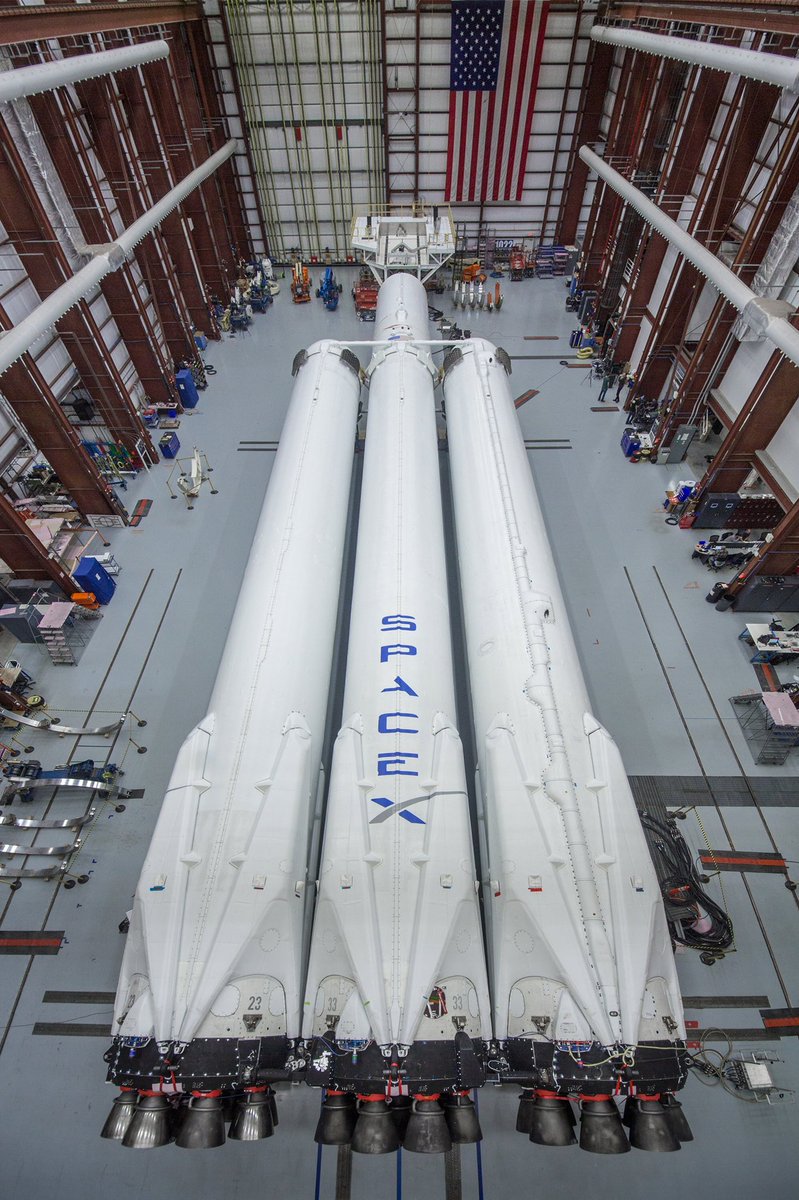
The Falcon Heavy’s first flight will use two side-mounted boosters recovered from previous Falcon 9 missions, and a newly-built central core specifically designed to handle the more intense aerodynamic and structural loads the huge rocket will encounter in flight.
The two side boosters first flew from Cape Canaveral last year with the Thaicom 8 communications satellite and SpaceX’s ninth resupply mission to the International Space Station, landing at sea and back on Florida’s Space Coast after boosting their payloads toward orbit.
SpaceX technicians added aerodynamic nose cones to the previously-flown boosters and installed forward and aft attach points to connect to the center stage.
Musk downplayed expectations for the Falcon Heavy’s maiden mission in July.
“The amount of load you’re putting through that center core is crazy because you’ve got two super-powerful boosters also shoving that center core, so we had to redesign the whole center core airframe,” Musk said. “It’s not like the Falcon 9 because it’s got to take so much load. Then you’ve got separation systems.”
After completing their firings, the side boosters will shut down and jettison from the core stage, flip around and thrust back toward landing pads at Cape Canaveral Air Force Station, returning in formation for nearly simultaneous touchdowns on two concrete pads a few hundred feet from the beach.
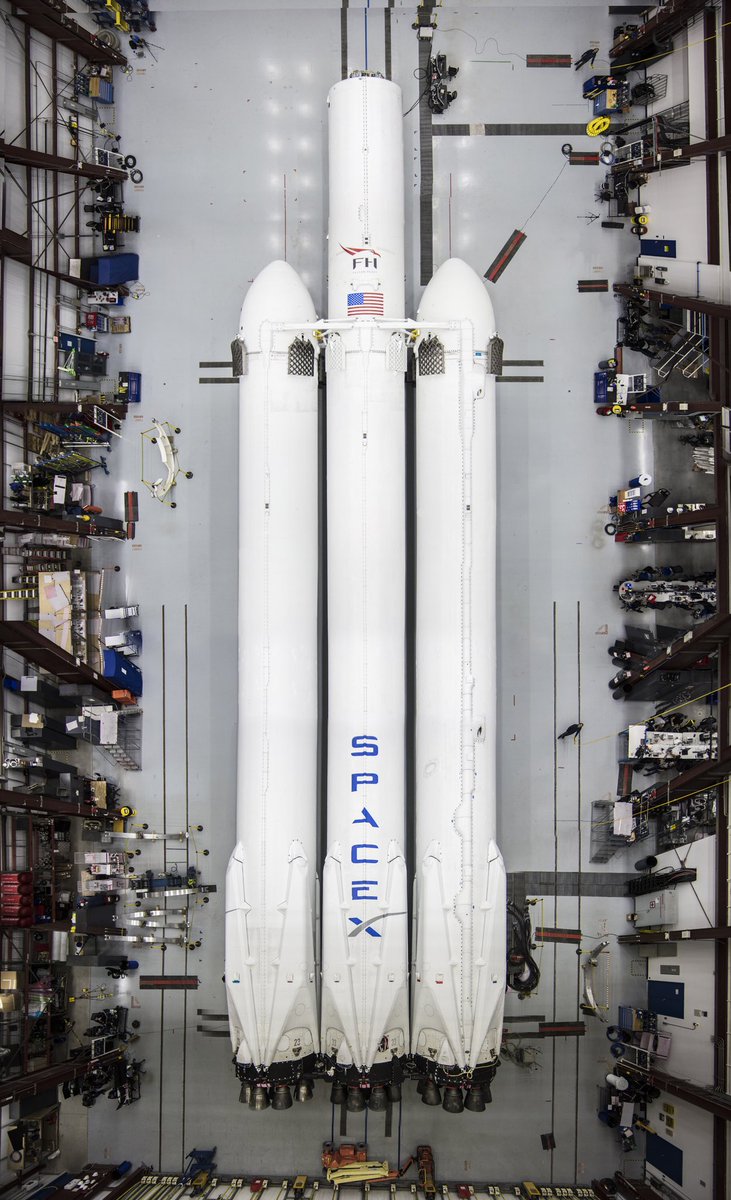
The center stage will throttle up and burn its nine engines longer, heading for landing on SpaceX’s offshore recovery platform in the Atlantic Ocean while the second stage fires into orbit.
The second stage will continue toward space, accelerating the mission’s fanciful-turned-real payload away from Earth.
The Falcon Heavy will weigh more than 3.1 million pounds (1.4 million kilograms) fully loaded with kerosene and liquid oxygen propellants and stand more than 229 feet (70 meters) tall.
According to SpaceX’s website, the Falcon Heavy can deliver more than 140,000 pounds (nearly 64 metric tons) of payload to low Earth orbit, a regime a few hundred miles above the planet, or 37,000 pounds (nearly 17 metric tons) on a trajectory toward Mars.
“The nice thing is when you fully optimize it, it’s about two-and-a-half times the payload capability of a Falcon 9,” Musk said. “It’s well over 100,000 pounds to LEO (low Earth orbit) of payload capability, 50 tons. It can even get up a little higher than that if optimized.”
Email the author.
Follow Stephen Clark on Twitter: @StephenClark1.

